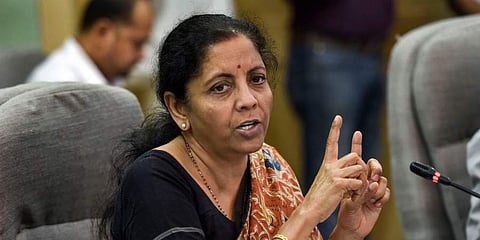

India is torn between tough choices.
Should it reduce personal income taxes even as it stares at a massive revenue shortfall? Or increase spending and breach the fiscal deficit target to revive demand and investment? Or do both?
On the surface, the economy isn't strong enough to take either, and it's unclear which way offers the biggest bang for the buck as the current economic slowdown, apparently, has two parents i.e. supply- and demand-side issues.
So far, we have seen all kinds of stimuli - monetary (rate cuts), fiscal (Rs 102 lakh crore planned infrastructure investment besides others) and even economic (corporate tax cuts). The impact of the latter won't be immediate, but since we need an instant demand booster, personal income tax cuts are seen as the ideal tool that'll right the economic ship.
But how exactly will it stimulate growth? Some believe the lower- and middle-income families will use tax savings to spend on assets including houses and spur consumption.
Not just income tax cuts, there should be capital gains tax cuts too, these experts assert, since this leaves more money with investors, who pump it into companies and in the process raise demand and housing and real-estate prices.
"Lower- and middle-income groups are the ones who spend. Instead of providing incentives for construction firms or some such, tax cuts will encourage house purchases by families who otherwise won't invest," Professor Anil K Sood of policy think-tank Ideas Sans Ideology told The New Indian Express.
But then such a move, along with corporate tax cuts, will reduce the tax-to-GDP ratio, which fell from 11.6 percent in 2004 to about 8.5 percent around 2009-10 and has remained constant since. "Revenue generation as an absolute amount is high, but tax-GDP is falling. It means, we only have that much money for growth and this isn't a great state to be in given our stage of development," said Sood.
Worryingly, the share of direct taxes within tax receipts too is reducing, while indirect taxes are increasing, resulting in a regressive tax regime as lower- and middle-income families bear the burden of indirect taxes and also pay direct taxes. What we need is a progressive tax regime, as Sood believes, the direct and indirect tax burden on middle income and salaried class is higher, and effectively killing our ability to grow.
That said, if demand picks up, the tax cuts objective will be met. On the flip side, paying for it through debt increases deficit, depletes national savings and raises interest rates. And tax cuts without expenditure compression isn't good economics either. Amid bleak revenue collections, spending cuts might appear inevitable (government has been resorting to it). But given the lack of private capital, particularly, in infrastructure, government spending is the only lever left to drive investment.
Moreover, we've already tested the hypothesis of bank-led financing (influenced by the government) for infrastructure in the last decade and the deep scars it left are still afresh. In the last 10 years, bank credit growth saw a phenomenal 40 percent increase, the bulk of which went to infrastructure and construction companies. Most of this lending has turned bad.
So, what's the way out?
"Large private firms are unwilling to spend. NHAI is struggling to repay, though it didn't default. Similarly, IFCI's equity isn't comfortable. Government should pump in equity and undertake projects in viable departments, put more money in infra funds. We have no choice but to invest in infrastructure," Sood explained.
Japan offers an interesting example. Between 1991 and 1998, it pumped 100 trillion yen through public works programmes and cut taxes by 2 trillion yen. In the end, it led to Japan's public debt rising to 100 percent of GDP. Even today, it runs a fiscal deficit as high as 140 percent of GDP. Yet, that isn't actually hurting the Japanese.
"One simple reason is, its borrowings are internal, much like India, which raises over 90 percent of its debt internally. Our internal debt-GDP remained constant at about 45 per over the last 15 years (now about 40 percent). So, today even if it goes up by a couple of points or say 45 percent, it doesn't really hurt us much," Sood concluded.